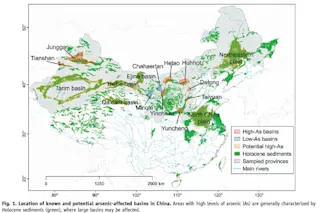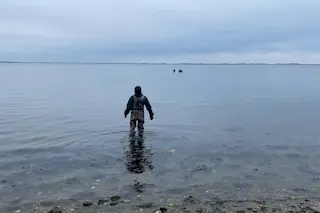That would be wonderful, as an estimated 140 million people worldwide consume groundwater containing unsafe levels of arsenic. There just simply aren’t enough resources to test the hundreds of thousands of wells, many in developing countries and rural areas, which could be harboring this toxic substance.
Arsenic is a naturally occurring element. Long-term chronic exposure to it — primarily through drinking water — has been linked to skin discoloration, loss of feeling in hands and feet, and cancer. The U.S. Environmental Protection Agency has set the standard for arsenic in drinking water in this country at 10 parts per billion (less than a drop in an Olympic-size swimming pool), but in many regions around the world people are exposed to much higher levels.
(Read more about arsenic in water and food in the next issue of Discover magazine, in which Deborah Blum investigates the health effects of consuming trace amounts. ...














